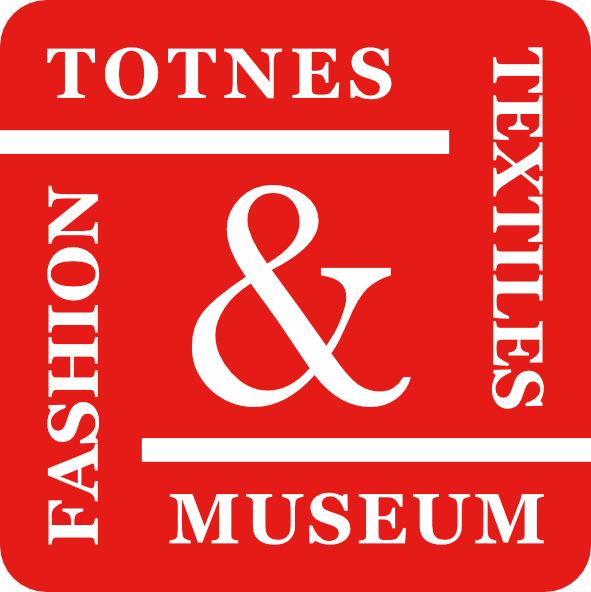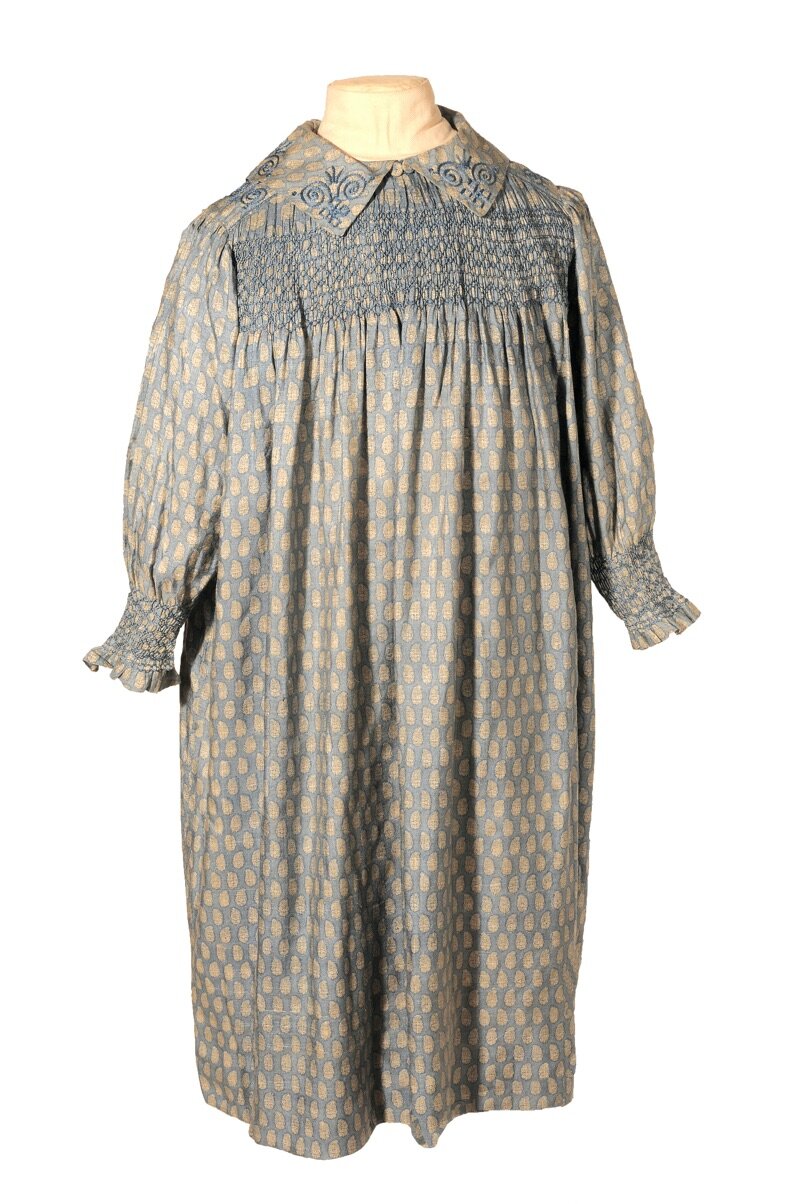Liberty garments in the Collection
This is an extract from a longer interview with Julia Fox, Curator of the Collection.
Our Liberty garments are very interesting because of their close relationship with the social movements of the time — the Arts and Crafts movement, the Aesthetic Movement, and Art Nouveau. The clothes really show a feeling for how they believed women should dress.
We have several Liberty garments in the Collection. Individual designers were not named — Liberty was the brand name. Many design ideas came from the East. Liberty wanted to go back to the qualities of handcraft and natural dyeing. Weaving came from India and China. In 1884 they started their own costume department headed by the architect E.W. Godwin.
In 1887 Liberty opened a children’s department featuring clothes in the style of Kate Greenway drawings, which were very popular at the time.
I am fascinated by Liberty garments. They demonstrate real skills in craft and design in the textile arts, influenced in particular by India and China.
1. The earliest Liberty item in the Collection is a long evening coat from c.1895 in a light weight woven silk in pinks and pale greens. Its style is influenced by the Pre-Raphaelites and the Mediaeval Revival with its stand-up collar and loose, flowing cut. The collar, cuffs and fake bolero are embroidered in Liberty’s trademark style, influenced by Chinese embroidery.
2. We have a child’s blue smocked dress from c.1900 with long sleeves and smocked cuffs, very much in the Kate Greenaway style. The seams are machined but the decoration is done by hand. The silk fabric is an indigo discharge print with the Indian buta pattern showing the ethnic influences on Liberty’s garments.
3. Our grey wool coat is also in a typically loose style with a wrap over front held together with large buttons and loops. Its set in sleeves are gathered to make an easy fit. The satin reveres and cuffs have the Liberty embroidery and the points of the collar are weighted down with long tasseled cords again hinting at the mediaeval period.
4. Liberty’s new Tudor shop opened in 1924. They supplied their floor walkers with long mediaeval style dresses in fine silk velvet. We have both a brown one and a purple one. They have laid on embroidery, some done with metallic thread. Cords draw the end of the sleeves together at the wrist and a pseudo girdle at higher hip level finishes with a swag down the front. The donor who gave the dresses says they were not easy to walk in due to the length. The floorwalkers would stand at the head of the stairs and summon assistants to take customers to their chosen department. Customers could select Liberty fabrics and have them made up to their taste.
5. Liberty made several styles of cloaks, popular with the Aesthetic Movement. We have one in cream wool on a circular yoke, which is embroidered with a heavy twist. The use of this style was not confined to Liberty at this time. In the early twentieth century, Jessie Newbury, who taught embroidery at Glasgow School of Art, demonstrated the same influences.
6. Our star Liberty exhibit is an 1894 wedding dress in lustrous cream pongee (Chinese silk). It has bands of smocking on the neck and yoke and further bands under the bust and on the sleeves. The long, banded sleeves are separate from upper puff sleeves, so the dress could be worn without them. Similarly, the high Edwardian neck and yoke were tacked in and could be removed for more relaxed evening wear. The dress has a mock-mediaeval girdle created by applied embroidery. The elongated back of the dress forms a short train and the frill on the hem acts as weighting.
Image reproduced from Liberty of London: Masters of Style and Decoration, edited by Stephen Calloway (Little, Brown and Company, Boston, 1992)





